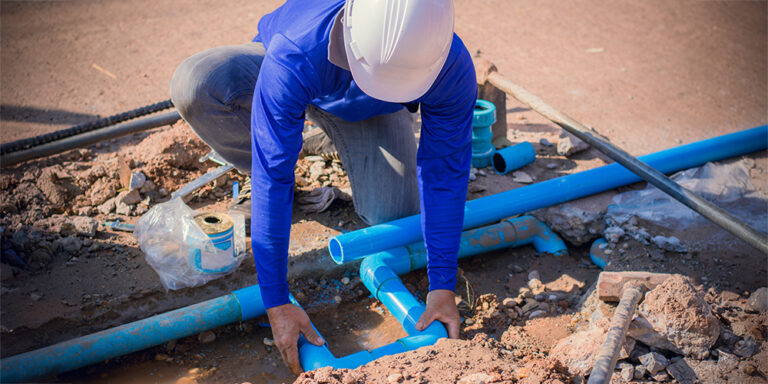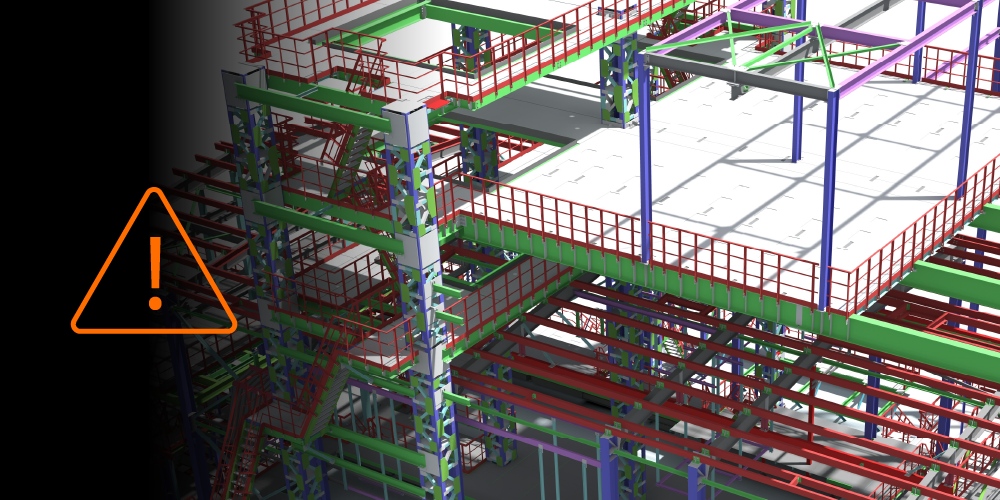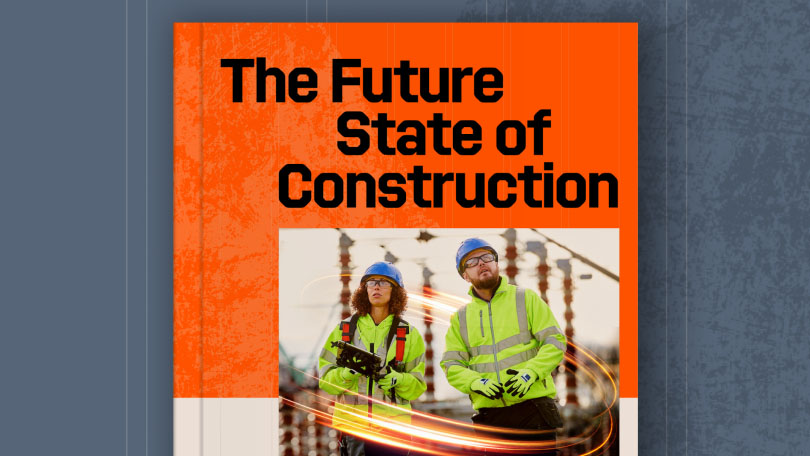Related Articles
— 8 min read
MEP Construction Explained: The Role of Mechanical, Electrical, and Plumbing Systems in Building Projects

Last Updated Aug 28, 2025

Josh Krissansen
48 articles
Josh Krissansen is a freelance writer with two years of experience contributing to Procore's educational library. He specialises in transforming complex construction concepts into clear, actionable insights for professionals in the industry.
Last Updated Aug 28, 2025

Mechanical, electrical, and plumbing (MEP) systems are some of modern construction's most technically demanding and tightly regulated aspects. When poorly designed or coordinated, they create downstream issues that increase cost, delay progress, and complicate compliance.
This guide explains how MEP systems function within commercial building projects, what makes them critical on Australian sites, and how to approach design and coordination to avoid common pitfalls.
Table of contents
What is MEP in Construction?
MEP stands for Mechanical, Electrical, and Plumbing. These systems form the backbone of a building’s operational infrastructure, supporting critical functions such as climate control, power distribution, water supply, and waste removal. They ensure safe, comfortable, and efficient indoor environments across all project types.
Why MEP Is Critical on Australian Sites
MEP systems are essential to project success. They affect everything from occupant comfort to long-term operational costs.
Occupant comfort and health
HVAC and lighting systems regulate temperature, air quality, and humidity. Poor design can lead to water ingress, mould, and ventilation issues that impact health and usability.
Safety and security
These systems supply power, lighting, clean water, and waste removal. All work must comply with the National Construction Code and AS 3000. Failures here risk compliance breaches, safety issues, and expensive rework.
Energy efficiency and cost savings
Smart MEP design reduces long-term costs. Value engineering and lifecycle cost analysis help improve performance and return on investment. BIM enhances accuracy and reduces coordination errors.
Regulatory compliance
MEP installations must meet the NCC and relevant state regulations. Licensing bodies such as NSW Fair Trading and the VBA strictly enforce codes for plumbing, electrical, and HVAC work.
Non-compliance can delay permits or lead to legal consequences.
Key Components of MEP Systems
MEP systems comprise three core disciplines: mechanical, electrical, and plumbing. Each is critical in delivering safe, compliant, and high-performing buildings. Understanding how these systems function is essential for effective coordination, cost control, and long-term operational outcomes.
Mechanical systems (HVAC)
Mechanical systems manage heating, ventilation, and air conditioning to control temperature, humidity, and air quality. This includes ductwork, air handling units, boilers, and ventilation outlets.
On Australian projects, HVAC must be carefully coordinated with electrical, hydraulic, and fire services to meet energy efficiency requirements under the National Construction Code. Poor coordination can increase energy use, trigger compliance issues, and lead to rework.
Electrical systems
Electrical systems distribute power across the site and enable essential services, including lighting, HVAC, alarms, and backup power. These systems typically involve panel boards, wiring, light fittings, switchboards, and generators.
Only licensed electricians can carry out work that complies with AS 3000. Accurate as-built documentation is required to support maintenance, certification, and compliance with the National Construction Code.
Plumbing systems
Plumbing systems deliver clean water, manage wastewater, and handle stormwater drainage. This includes pipework, waste lines, gas connections, and fixtures across potable and non-potable systems.
Plumbing must meet the National Construction Code and relevant Australian and international standards. Good hydraulic design supports sustainability, site safety, and compliance. On some projects, the mechanical team also delivers plumbing and gas scopes.
MEP Engineering and Design Process
An effective MEP design process improves constructability, reduces risk, and helps teams meet compliance, safety, and cost objectives. Success depends on early coordination, clear documentation, and structured communication between disciplines.
Early Design Input and Architectural Coordination
The process begins with early involvement from MEP engineers during concept and schematic design. Collaborating with architects and the head contractor at this stage ensures the building layout supports constructability, service access, and compliance.
This is particularly important for complex projects such as high-rise developments, where system positioning can affect structural design. Design managers and lead consultants align spatial, cost, and program requirements across disciplines.Cross-Disciplinary Collaboration
As the design develops, all building services must be coordinated to avoid spatial and functional conflicts. Mechanical, electrical, and plumbing systems interact closely and often compete for limited space.
Regular workshops and preconstruction meetings allow teams to resolve issues early. Involving subcontractors during design improves accuracy and helps prevent installation delays. The head contractor must set clear expectations and manage accountability across trades.Detailed Drawings and Documentation
Following coordination, project teams produce detailed drawings for installation and procurement. These include HVAC layouts, electrical plans, and plumbing schematics that reflect the coordinated design.
Drawings must comply with Australian and international standards, including the National Construction Code. Most teams use digital modelling tools to support this process, enabling greater accuracy and easier coordination.
Supporting documentation includes:
Specifications outlining performance standards and materials
Shop drawings detailing system layouts and connection points
As-built drawings for certification, maintenance, and asset handover
These outputs form the foundation for a successful delivery phase, giving site teams the clarity needed to install systems safely, efficiently, and in compliance with project requirements.
MEP Implementation: Common Challenges & Creative Solutions
Because of their complex and deeply interdependent nature, MEP systems can delay progress, inflate costs, and expose teams to compliance risk without careful coordination.
This section outlines the most common challenges on Australian commercial sites and the practical strategies used to solve them.
1. Poor system coordination
Trades working at cross purposes with each other or losing visibility on their respective contributions continue to be one of the most common causes of installation delays.
These often stem from outdated models, undocumented design changes, or gaps in communication across subcontractors. And design-build delivery only intensifies the risk because key phases overlap.
Best practices for avoiding system coordination challenges
- Use a centralised platform to maintain a single source of truth for models, drawings, and updates
- Appoint the head contractor as the communication lead to ensure visibility and accountability across trades
- Engage subcontractors early to align on design intent, scope, and installation requirements
- Conduct structured preconstruction meetings with clear agendas and system-specific deadlines
- Use clash detection tools to identify and resolve conflicts before they reach the site
2. Inadequate design or oversight
Incomplete drawings, ambiguous specifications, and unrealistic installation targets often lead to rework and quality issues. Without clear ownership, mistakes are repeated rather than resolved.
Best practices for avoiding design oversight challenges
- Review designs with construction engineers to validate buildability and compliance
- Ensure all documentation is complete, up to date, and accessible throughout the project
- Use detailed shop drawings and as-built plans to guide installation and maintenance
- Apply value engineering to refine system design for cost, constructability, and long-term performance
- Create a quality risk register to assign responsibility and link work to Australian standards
3. Regulatory and compliance issues
Navigating the National Construction Code and state-specific regulations is complex, especially on long or fast-tracked programs. Code gaps often arise when design and construction overlap.
Best practices for avoiding regulatory and compliance issues
- Assign a team member to manage communication with code officials throughout the project
- Involve construction engineers early to confirm compliance during design
- Reference applicable codes and standards directly in all technical specifications
- Use consistent quality management processes to document compliance and track accountability
- Maintain a central register of compliance risks and their mitigation plans
4. Budget overruns and delays
Poor cost control, scope creep, and supply chain disruption are leading causes of budget blowouts. Without precise tracking and approval protocols, minor issues compound quickly.
Best practices for avoiding budget overruns and delays
- Build accurate estimates with clearly defined scope and unit rates
- Use real-time tracking to monitor costs, variations, and supplier invoices
- Implement change control workflows to assess all scope changes against time and cost
- Establish contingency plans for market shifts, labour shortages, or delivery risk
- Monitor labour and material performance to detect inefficiencies early
- Use historical data to inform procurement, resourcing, and risk allowances
- Involve all stakeholders early in procurement to align expectations and build flexibility into the budget
Additional best practice: Sustainable and efficient design choices
MEP systems are often overdesigned or lack foresight for long-term efficiency and environmental performance.
Best practices to employ here include:
- Use Value Engineering to balance functionality, cost, and sustainability
- Model environmental impacts to guide design decisions and system sizing
- Align designs with ISO 14001 principles to integrate sustainability with quality and safety outcomes
- Prioritise long-term efficiency and maintenance savings over short-term installation cost
Emerging Trends and Technologies in MEP Construction
New technologies are reshaping how MEP systems are planned and delivered. As projects become more complex and performance standards rise, construction teams adopt tools that improve coordination, reduce risk, and support long-term efficiency.
Building Information Modelling (BIM)
BIM remains the foundation of modern MEP coordination. It enables teams to identify clashes and sequence installations before work begins on site. The growing use of 4D models connects design with the construction timeline, improving planning and reducing delays.
Shared models also streamline consultant approvals and ensure all trades work from current information.Intelligent systems and connected tools
Wireless sensors, IoT devices, and integrated system monitoring are helping teams detect issues earlier and improve preventative maintenance. These tools enable real-time performance tracking across lighting, HVAC, and plumbing systems.
On-site, connected tools and smart equipment improve installation accuracy, safety, and responsiveness to defects.AI and data-driven decision-making
Artificial intelligence is starting to support MEP design and delivery through predictive clash detection, document management, and sequencing recommendations.
Paired with analytics tools, AI can help project teams track performance, detect cost or delay risks, and refine system choices to reduce lifecycle costs. These insights are most powerful when integrated into early-stage planning.Sustainable and modular solutions
Demand is increasing for MEP designs that support renewable energy, battery storage, and smart-grid readiness. At the same time, modular and prefabricated assemblies are reducing installation time, improving safety, and supporting better waste and energy management.
When planned early, these solutions help teams meet environmental goals while accelerating project delivery.
Effective MEP construction depends on coordination, compliance, and forward planning
This article has outlined the core components, design process, common challenges, and emerging trends shaping MEP construction on Australian commercial sites. With the right systems, collaboration, and tools, teams can reduce risk, improve efficiency, and deliver high-performing buildings.
Categories:
Written by

Josh Krissansen
48 articles
Josh Krissansen is a freelance writer with two years of experience contributing to Procore's educational library. He specialises in transforming complex construction concepts into clear, actionable insights for professionals in the industry.
View profileExplore more helpful resources

Managing Direct Costs in Construction: How Visibility Drives Profitability
Direct costs define the financial reality of every construction project. They cover the labour, materials, and equipment that drive delivery and determine profitability. But even the best-planned budgets can shift...

BIM Clash Detection: Reducing Rework, Delays, and Risk in Construction
Design clashes can be a significant hidden cost in construction, as each conflict between systems risks expensive rework, project delays, and reduced margins. BIM clash detection empowers teams to identify...

Next-Gen Job-Costing: Ready to Move? 5 Things to Consider Before You Get Started
In this three-part series, Quantity Surveyor turned Financial Solutions Specialist Clint Burgess uncovers the real-world gains for people, processes, and profits when businesses move from legacy to next-generation Enterprise Resource...

From Workarounds to Workflow: Solving Construction’s Legacy Job-Costing System Challenges with Next-Gen Tools
In this three-part series, Quantity Surveyor turned Financial Solutions Specialist Clint Burgess uncovers the real-world gains for people, processes, and profits when businesses move from legacy to next-generation Enterprise Resource...
